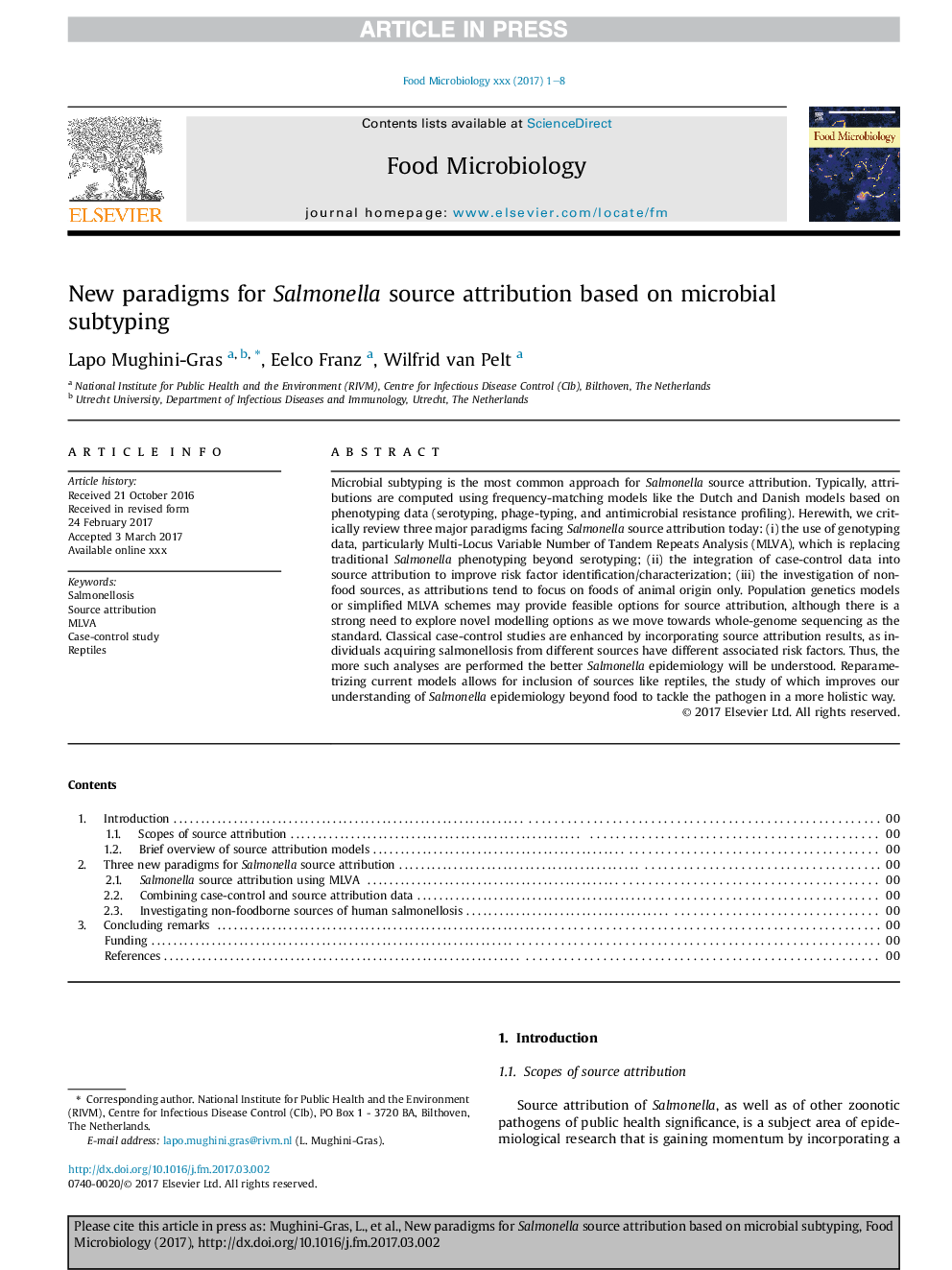| Article ID | Journal | Published Year | Pages | File Type |
|---|---|---|---|---|
| 8843601 | Food Microbiology | 2018 | 8 Pages |
Abstract
Microbial subtyping is the most common approach for Salmonella source attribution. Typically, attributions are computed using frequency-matching models like the Dutch and Danish models based on phenotyping data (serotyping, phage-typing, and antimicrobial resistance profiling). Herewith, we critically review three major paradigms facing Salmonella source attribution today: (i) the use of genotyping data, particularly Multi-Locus Variable Number of Tandem Repeats Analysis (MLVA), which is replacing traditional Salmonella phenotyping beyond serotyping; (ii) the integration of case-control data into source attribution to improve risk factor identification/characterization; (iii) the investigation of non-food sources, as attributions tend to focus on foods of animal origin only. Population genetics models or simplified MLVA schemes may provide feasible options for source attribution, although there is a strong need to explore novel modelling options as we move towards whole-genome sequencing as the standard. Classical case-control studies are enhanced by incorporating source attribution results, as individuals acquiring salmonellosis from different sources have different associated risk factors. Thus, the more such analyses are performed the better Salmonella epidemiology will be understood. Reparametrizing current models allows for inclusion of sources like reptiles, the study of which improves our understanding of Salmonella epidemiology beyond food to tackle the pathogen in a more holistic way.
Related Topics
Life Sciences
Agricultural and Biological Sciences
Food Science
Authors
Lapo Mughini-Gras, Eelco Franz, Wilfrid van Pelt,
